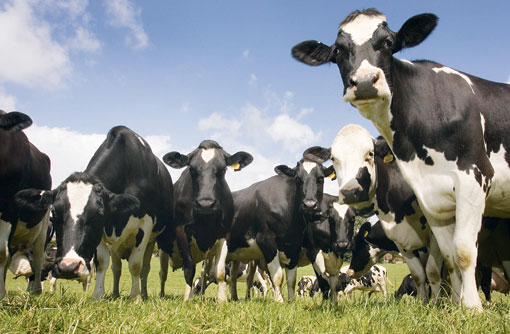Use genetic indices to slash replacement rates

Dairy farmers could slash replacement rates and boost profits considerably by making better use of genetic indices. Olivia Cooper reports.
Years of selectively breeding for milk production have taken a heavy toll on cow health and longevity. The national herd averages only about three lactations, with fertility, lameness and mastitis to blame for a massive proportion of involuntary culls.
However, genetic indices provide producers with a transparent way to improve longevity without affecting yield – they just need to make better use of the information available, said Ian Powell, director of The Dairy Group.
Speaking at a recent meeting at Ashridge Farm, Littleham, Devon, he explained that mastitis represented 38% of dairy farms’ health costs, with lameness making up 27% – equivalent to £14,700 a year for a typical 150-cow herd.
“Similarly, average culling rate due to poor fertility is 18%, compared to a target rate of 10%. This higher rate equates to 12 extra cows a year in the typical herd, which at a cost of £1,330 per replacement is equivalent to £15,960 per year, or £190m a year across the UK.”
Marco Winters, head of genetics at DairyCo, said better performance recording and bull proofs meant it was now easier to breed dairy cows to last longer, and improve profitability.
“Cows with better genetic value are more efficient, which reduces costs of production: Genetics should be a critical component to any dairy business.”
Herd assessment
The first step was to assess one’s own herd, said Nick Holt-Martyn, breeding specialist at The Dairy Group. “Look at your records for leading cull reasons: if you have a problem with lameness, select a bull with good feet and legs.”
Producers should then draw up a shortlist of suitable bulls, starting with those at the top of the Profitability Lifespan Index (PLI). “If you want to improve your genetics quickly, go for the top bulls.”
The shortlist should contain double the number of bulls needed, so producers could then go through and select the best bulls to suit their cows. “Use up last year’s semen first, and allocate the right bull to the right cow to avoid inbreeding.”
Longevity
When selecting a bull for longevity, producers should first look at its score for lifespan, as all other traits would feed into how long its offspring would last in the herd, said Mr Winters.
“You can increase lifespan by one lactation by moving from the bottom scoring bulls to the top.” Milk production should also be considered, but in balance with health and longevity factors like fertility, somatic cell counts, and type traits like legs, feet, udders and size.
“By selecting for fertility you can increase non-return rates by 15% in one generation. Obviously, management is important, but by not selecting bulls for fertility we are never going to breed infertility out of the herd.”
Cell counts could be slashed by 30% – but too often producers chose bulls based on type traits and nothing else. “Type should not be the number one criteria when it comes to bull selection – it is important, but you should be looking at lifespan, fertility and cell counts first.”
Profitable Lifetime Index
The development of the Profitability Lifespan Index (PLI) had further simplified farmers’ options when choosing genetics, said Mr Winters. It weighted the five most important proofs to produce a score based on extra profitability, with 45% attributed to production traits, and the rest linked to costs, split into 21% lifespan, 19% fertility, 5% cell count and 10% type traits.
“A bull won’t get into the top of the PLI if it scores badly in any one area. The current PLI scores range from negative to plus £200 – daughters of top bulls will earn about £200 more than average daughters, which is worth £30,000 for a 150 cow herd. It’s easy to get hung up on all the detail, but if you concentrate on the PLI and these five traits you can’t go far wrong.”
Top tips
• Assess your own herd and culling reasons
• Match bulls to cows to improve individual traits
• Choose bulls based on lifespan and PLI not just type
• Consider crossbreeding for hybrid vigour
Key figures at a glance
• Selecting for fertility can increase non return rates by 15% in one generation
• Daughters of top PLI bulls will earn about £200 more than average daughters, which is worth £30,000 for a 150-cow herd
• A culling rate of 18% for poor fertility, compared to a target rate of 10% equates to 12 extra cows a year in the typical herd, which is equivalent to £15,960 a year.
• Read our step-by-step guide to using breeding indices
